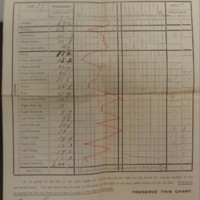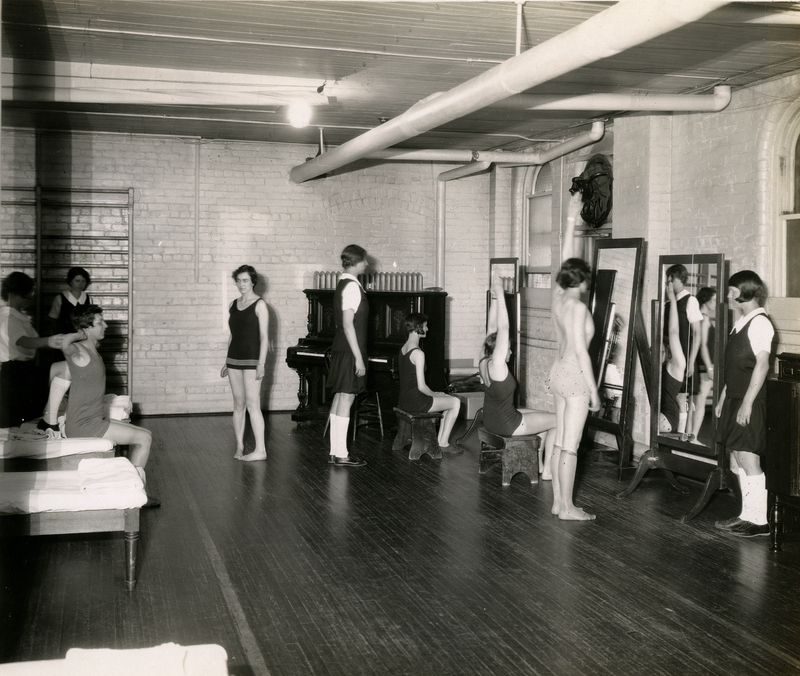The Student "Body"
On December 3, 1881, in an issue of The Chronicle—a bi-weekly newspaper published by students at the University of Michigan—undergraduate C.T. Wilkins described the need for a gymnasium on campus. Hoping to incite excitement about the proposition, Wilkins wrote, “let [the students] join the Athletic Association and remembering the motto mens sana in corpore sano, enter into the different sports on Field-Day and take an active interest in athletics.”[1] Wilkins’s inclusion of the Latin phrase mens sana in corpore sano, which translates as “a healthy mind in a healthy body,” reflected a greater ethos among the University at the time: a belief in the importance of cultivating a well-rounded student, especially one that was physically fit.
To this end, one of the primary agendas of the early Michigan physical education program was to “correct” the supposed “defects” of its students’ bodies; women students were often seen as particularly “defective.” After the formation of the Department of Physical Education for Women in 1921, the new department administered mandatory medical exams for women. These exams included measurements of an individual’s nose, skin, teeth, feet, posture, height, and weight.[2] Depending on the results of the examination, some women were required to take a “correctives” course. The Department claimed that this class served to “correct defects,” such as scoliosis, poor posture, and weight problems, among other issues.[3] In addition, women would receive “posture grades;” a student with a posture grade below “C” were required to take individual gymnastics. Posture exams existed for men as well, but corrective work for men was optional.[4]
The requirements of the Department of Physical Education eventually became less strict and were eventually eliminated. In 1933, partly due to the efforts of the Michigan Daily, the physical education requirement for women was reduced to one year, equivalent to the requirements for men. Correctives diminished through the years as well, and by the mid-1950s, students who were once required to take corrective classes were simply given suggestions on how to improve their health.[5] By 1969, the physical education requirement was removed for all students.
[1] C.T. Wilkins. The Chronicle (Ann Arbor, MI), December 3, 1881. Volume XIII, September 1881-June 1882. University of Michigan Bentley Historical Library, Ann Arbor, MI. p. 65.
[2] Department of Physical Education for Women, President’s Report 1930/31, p.43-45, 51, Bentley Historical Library, University of Michigan.
[3] Department of Physical Education for Women, President’s Report 1930/31, p.86-87, Bentley Historical Library, University of Michigan.
[4] History of its establishment circa 1928 p.8, Box 2, John Sundwall Papers: 1921-1944, Bentley Historical Library, University of Michigan
[5] Department of Physical Education for Women, President’s Report 1953/54, p.132, Bentley Historical Library, University of Michigan.
[6] University of Michigan Health Service: Twenty-Fifth Anniversary, 1913-1938 (Ann Arbor, Michigan: University of Michigan, 1938), 7.
[7] University of Michigan Health Service: Twenty-Fifth Anniversary, 1913-1938 (Ann Arbor, Michigan: University of Michigan, 1938), 22.
[8] “ ‘M’ Initiates Athletic Medicine Program,” Michigan Daily, March 31, 1965.
[9] “Health Service Study Committee Report,” May 1968, Folder: Health Service Newsletter, 1969-1971, Box 2, University Housing Records, Bentley Historical Library, University of Michigan.


